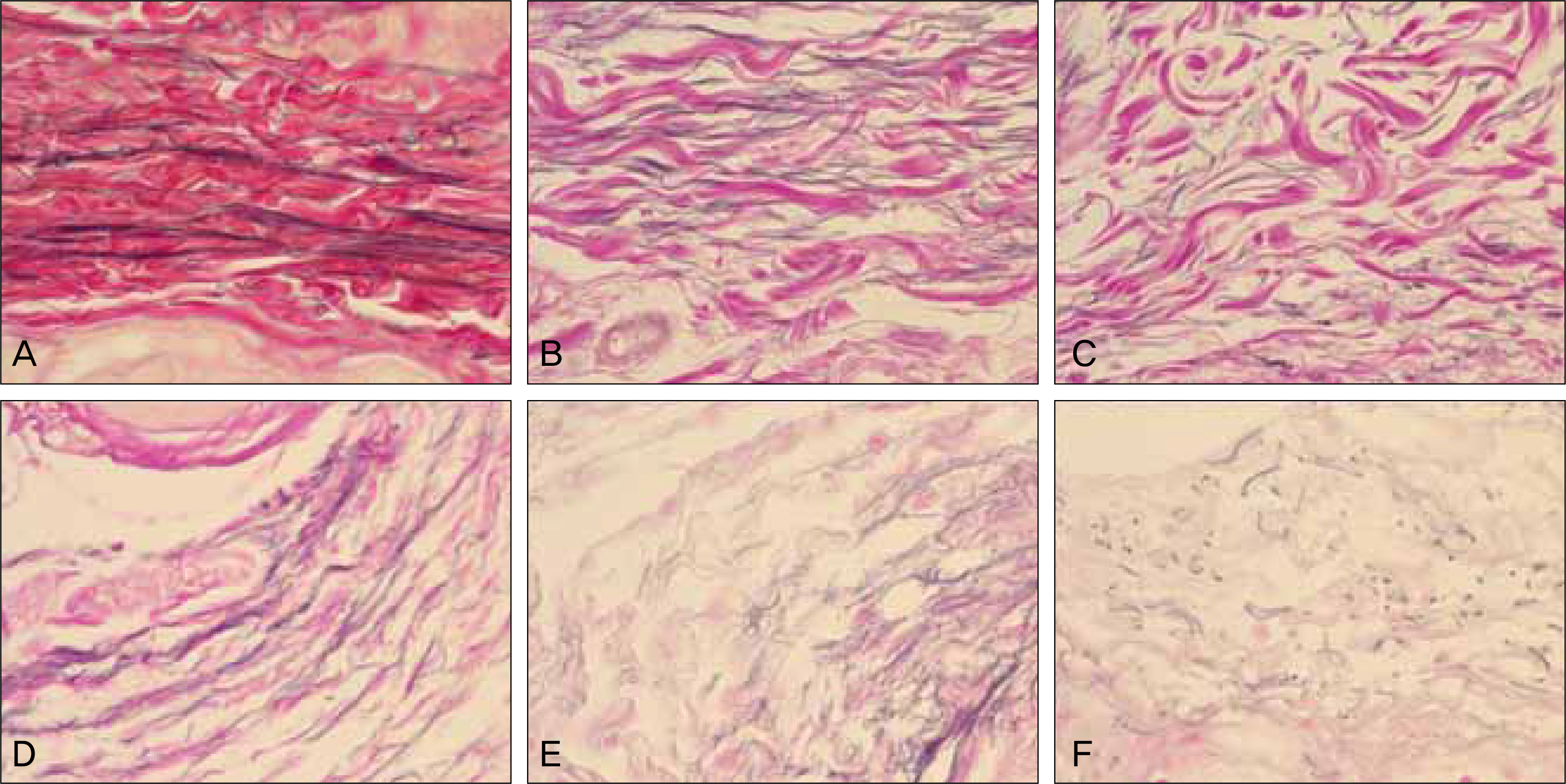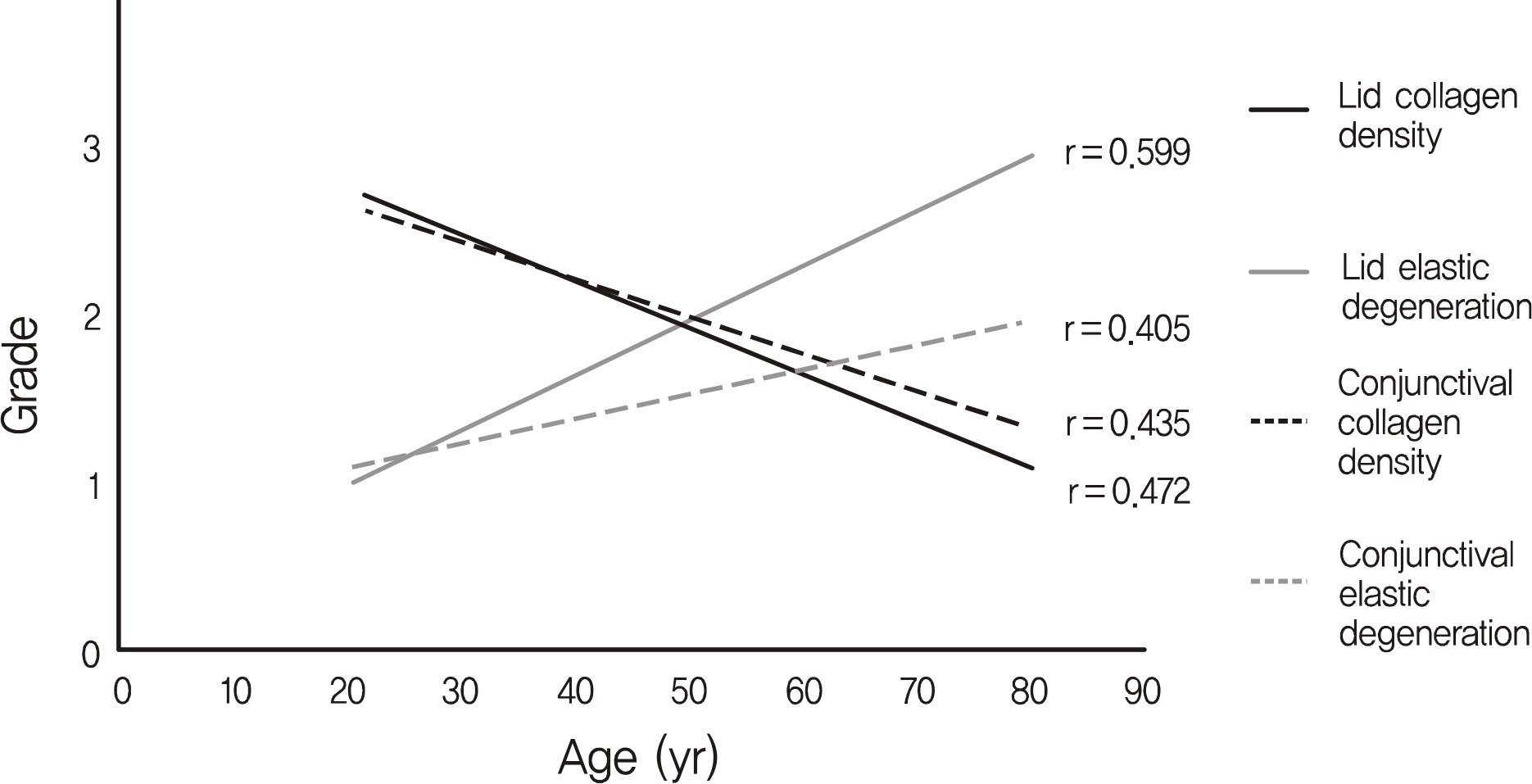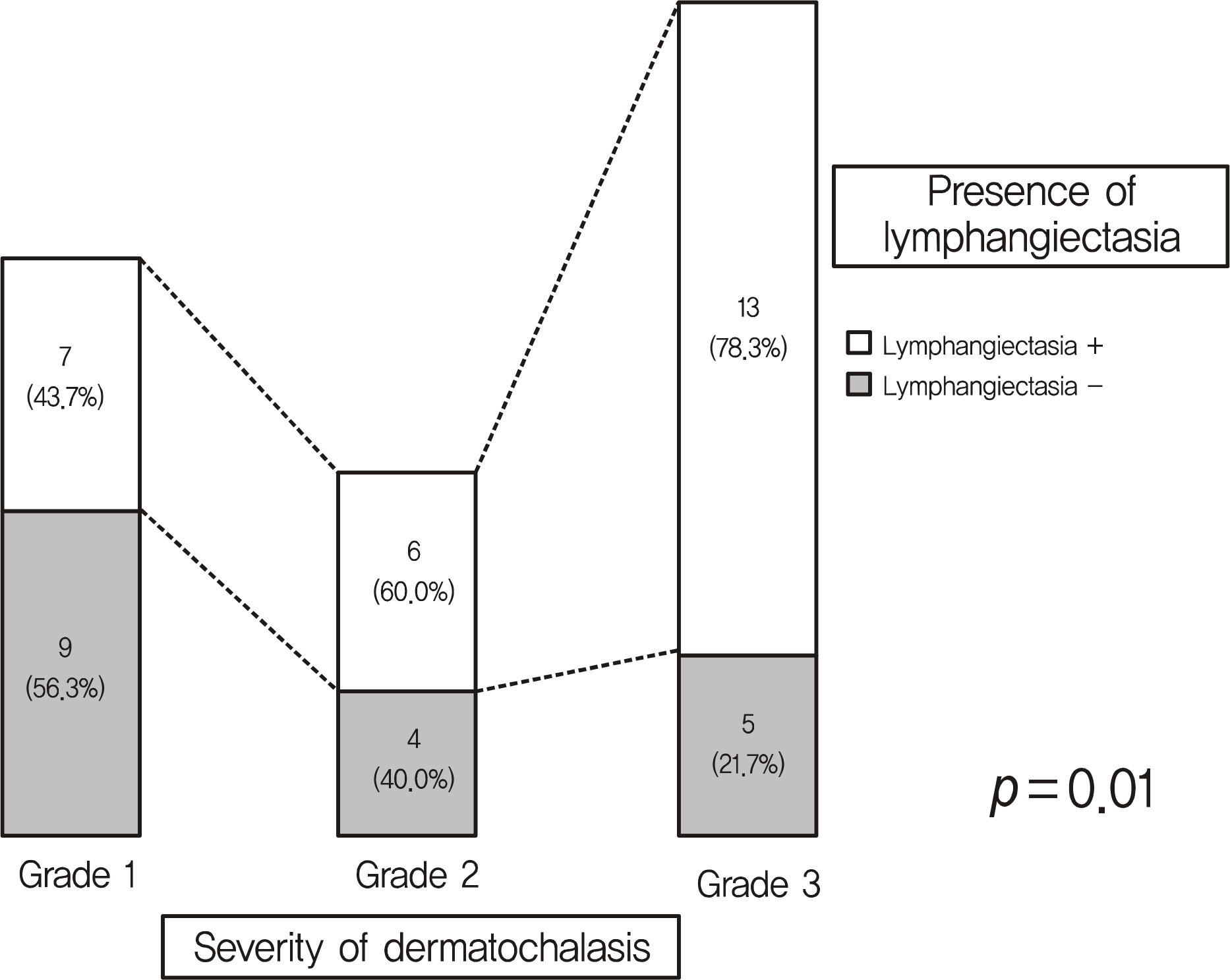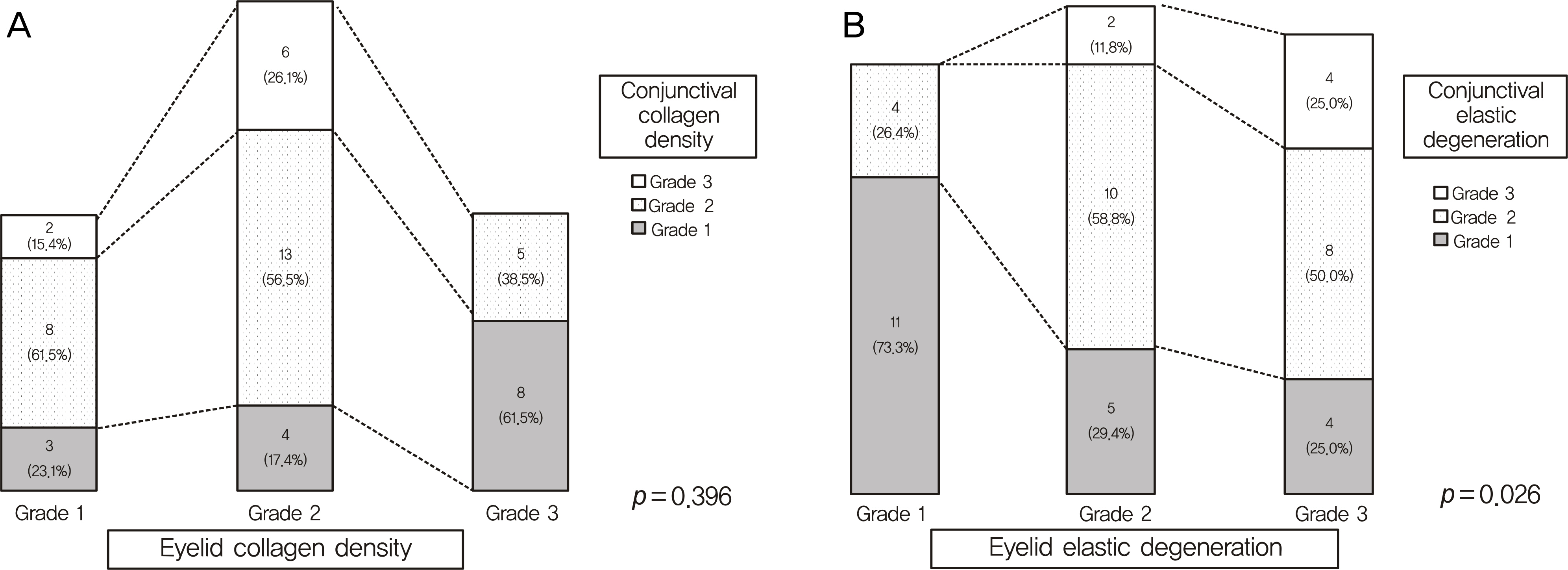J Korean Ophthalmol Soc.
2011 May;52(5):582-588. 10.3341/jkos.2011.52.5.582.
Histopathologic Properties of Eyelid Skin and Conjunctiva in Patients with Dermatochalasis
- Affiliations
-
- 1Department of Ophthalmology, CHA Bundang Medical Center, CHA University, Seongnam, Korea. eye@cha.ac.kr
- KMID: 2214578
- DOI: http://doi.org/10.3341/jkos.2011.52.5.582
Abstract
- PURPOSE
To evaluate histopathologic properties of eyelid skin and conjunctiva and the association between clinical manifestation and histopathologic findings.
METHODS
A prospective study was conducted on the histologic findings of the upper eyelid skin and conjunctiva performed from November 2009 to February 2010 in 27 patients for upper eyelid blepharoplasty procedures. Histopathologic studies were performed for specimens collected from the upper eyelid skin and inferotemporal bulbar conjunctiva. Preoperative photographs of the upper eyelid and conjunctiva were taken to grade clinical severity of dermatochalasis and conjunctivochalasis.
RESULTS
Decrease of collagen density and elastic degeneration in the eyelid skin and conjunctiva were significantly associated with aging (p < 0.001, p = 0.001, p = 0.001, p < 0.001). Clinical severity of dermatochalasis was correlated with a decrease of collagen density and elastic degeneration in the eyelid skin, and clinical severity of conjunctivochalasis was associated with a decrease of collagen density, elastic degeneration and lymphangiectasia in conjunctiva (p < 0.001).
CONCLUSIONS
Change of collagen fiber and elastic fiber in the eyelid skin and conjunctiva was observed with aging. Relaxation of the eyelid skin and conjunctiva was correlated with histologic findings.
Keyword
MeSH Terms
Figure
Cited by 1 articles
-
Histopathologic Characteristics of Conjunctivochalasis
Jeong Bum Bae, Woo Chan Park
J Korean Ophthalmol Soc. 2013;54(8):1165-1174. doi: 10.3341/jkos.2013.54.8.1165.
Reference
-
References
1. DeAngelis DD, Carter SR, Seiff SR. Dermatochalasis. Int Ophthalmol Clin. 2002; 42:89–101.
Article2. Hughes WL. Conjunctivochalasis. Am J Ophthalmol. 1942; 25:48–51.
Article3. Meller D, Tseng SC. Conjunctivochalasis: literature review and possible pathophysiology. Surv Ophthalmol. 1998; 43:225–32.4. Francis IC, Chan DG, Kim P, et al. Case-controlled clinical and histopathological study of conjunctivochalasis. Br J Ophthalmol. 2005; 89:302–5.
Article5. Watanabe A, Yokoi N, Kinoshita S, et al. Clinicopathologic study of conjunctivochalasis. Cornea. 2004; 23:294–8.
Article6. Höh H, Schirra F, Kienecker C, Ruprecht KW. Lid-parallel conjunctival folds are a sure diagnostic sign of dry eye. Ophthalmologe. 1995; 92:802–8.7. Baumann L. Skin ageing and its treatment. J Pathol. 2007; 211:241–51.
Article8. Makrantonaki E, Zouboulis CC, William J. Cunliffe Scientific Awards. Characteristics and pathomechanisms of endogenously aged skin. Dermatology. 2007; 214:352–60.9. Hwang K, Kim DJ, Kim SK. Does the upper eyelid skin become thinner with age? J Craniofac Surg. 2006; 17:474–6.
Article10. Kocaoglu FA, Katircioglu YA, Tok OY, et al. The histopathology of involutional ectropion and entropion. Can J Ophthalmol. 2009; 44:677–9.
Article
- Full Text Links
- Actions
-
Cited
- CITED
-
- Close
- Share
- Similar articles
-
- The Change of Eyebrow Position After Upper Lid Blepharoplasty in Patients With Dermatochalasis
- Correction of the Sunken Upper Eyelid Depending on the Dermatochalasis or Blepharoptosis Using the Autologous Fat Grafting
- Sub-brow blepharoplasty for simultaneous correction of dermatochalasis with upper eyelid hooding and sunken eyelids
- Blepharoptosis Repair through the Small Orbital Septum Incision and Minimal Dissection Technique in Patients with Coexisting Dermatochalasis
- Anatomy of upper Eyelid in Korean









